Other Wildlife
The following is a guide to other wildlife that may be encountered in the Arboretum.
- Family
- Habitat: where it can be found in southern Minnesota
- Most commonly heard vocalizations
- Size
- Diet
- Status at Gustavus (when and how often it is seen on campus)
- Additional information
Mammals
Red Squirrel (Tamiasciurus hudsonicus)
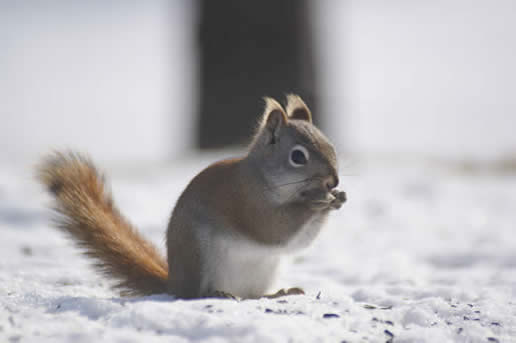
- Status: commonly seen near coniferous trees in Arb throughout the year, more often encountered in winter near Interpretive Center
- Habitat: coniferous and mixed woodlands, suburban areas near bird feeders
- Vocalizations include a loud, sharp “chek,” also a series of similar notes
- Length up to 16 inches
- Diet: nuts, seeds, fruit, berries, insects
Eastern Gray Squirrel (Sciurus carolinensis)
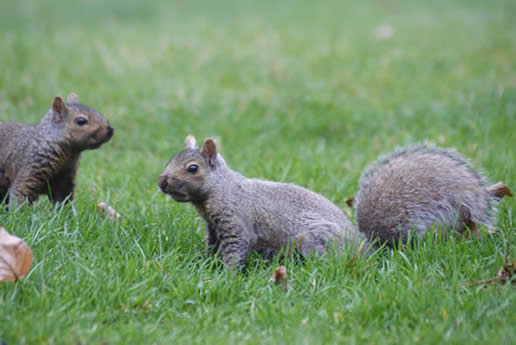
- Status: commonly seen near trees in Arb throughout the year, especially near the Interpretive Center
- Habitat: woodlands, forested areas, suburban areas near bird feeders
- Vocalizations include chirps and harsh scolding notes
- Length up to 2 feet
- Diet: nuts, seeds, fruit, berries, insects
Thirteen-lined Ground Squirrel (Spermophilus tridecemlineatus)
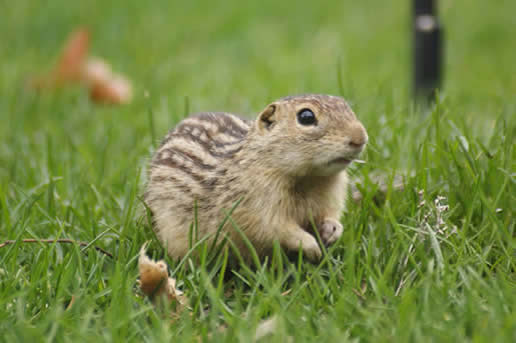
- Status: abundant across campus from early April to mid-October, frequently seen foraging in lawns
- Habitat: grassy, open areas, suburban lawns and gardens, prairies
- Vocalizations include a high, sharp squeak
- Length up to 12 inches
- Diet: plants, fruit, seeds, insects
- Commonly called "gopher"
Eastern Chipmunk (Tamias striatus) L.
- Status: infrequently seen in Arb, most often near wooded areas
- Habitat: woodlands, forested areas, suburban lawns and gardens
- Vocalizations include variety of chirping notes
- Length up to 8 inches
- Diet: plants, fungi, seeds, nuts, fruit, insects
American Badger (Taxidea taxus)
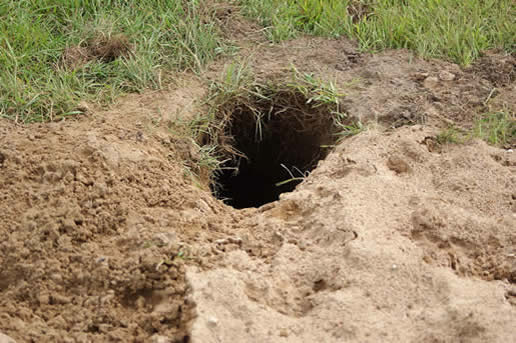
- Status: burrows frequently found in open areas in Arb, especially in Coneflower Prairie, but animal itself is rarely seen
- Habitat: grasslands, large lawn expanses, agricultural fields
- Vocalizations include growling and harsh hissing sounds
- Length up to 3 feet
- Diet: ground squirrels and other small mammals are preferred, but small reptiles, amphibians, fish, birds, and insects are also consumed
- Primarily nocturnal
White-tailed Deer (Odocoileus virginianus)
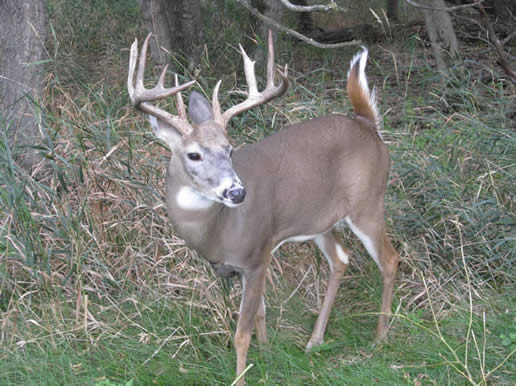
Photo taken west of St. Peter, Nicollet County by Andy Frederick
- Status: infrequently seen in Arb throughout the year, most often in woodlands during morning and evening hours
- Habitat: woodlands, forested areas
- Vocalizations include a loud, abrupt snort
- Length up to 7 feet, height up to 5 feet
- Diet: plants, fungi, seeds, nuts, berries
Eastern Cottontail (Sylvilagus floridanus)
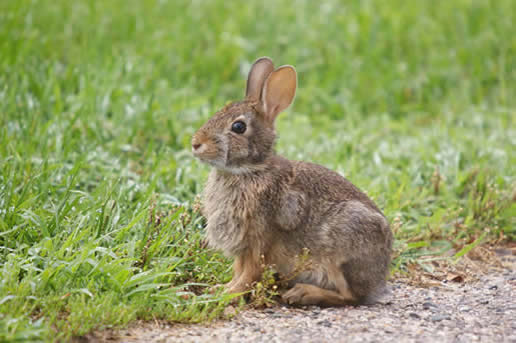
- Status: abundant most years across campus, frequently seen foraging in lawns
- Habitat: grassy, open areas, suburban lawns and gardens
- Generally silent
- Length up to 16 inches
- Diet: plants, fruit, seeds
Northern Short-tailed Shrew (Blarina brevicauda)
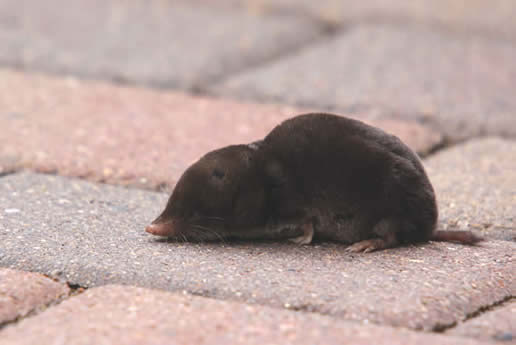
- Status: infrequently seen in Arb, most often near dense cover or bird feeders
- Habitat: grasslands, woodlands, forested areas, suburban lawns and gardens
- Generally silent or inaudible
- Length up to 5 inches
- Diet: seeds, fungi, insects, earthworms, other small rodents
- Highly carnivorous, consumes up to three times its weight in food each day
Deer Mouse (Peromyscus maniculatus)
- Status: infrequently seen in Arb during warm months, often near wooded areas
- Habitat: variety of habitats, most often woodlands and forested areas
- Generally silent or inaudible
- Length up to 10 inches
- Diet: plants, fungi, seeds, fruit, insects
- Primarily nocturnal
Little Brown Myotis (Myotis lucifugus)
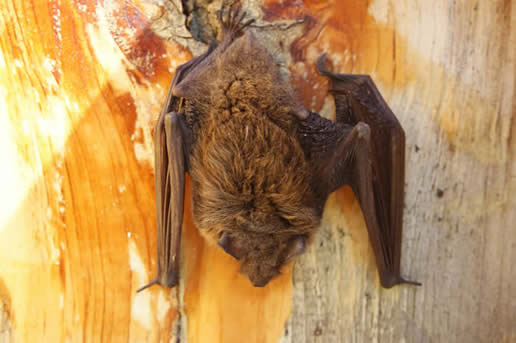
- Status: commonly seen flying around Arb near dusk and lighted areas around campus at night mid-May to late September, sometimes found sleeping on sides of buildings during daytime
- Habitat: variety of habitats, roosts in trees and old buildings
- Vocalizations generally inaudible
- Length up to 4 inches, wingspan up to 11 inches
- Diet: flying insects (including mosquitoes)
- Hibernates through winter in caves or other protected, enclosed spaces
Reptiles and Amphibians
Common Garter Snake (Thamnophis sirtalis) L.
- Status: infrequently seen throughout Arb early April to late October, especially near wetlands
- Habitat: variety of habitats, open areas near woody or grassy cover
- Generally silent
- Length up to 3 feet
- Diet: variety of prey including insects, small birds and rodents, frogs
- Not harmful to humans
Eastern Plains Garter Snake (Thamnophis radix)
- Status: infrequently seen in Arb early May to late October, most often foraging in lawns or near prairie
- Habitat: variety of habitats, most often seen in open areas near woody or grassy cover
- Generally silent
- Length up to 3 feet
- Diet: variety of prey including insects, small birds and rodents, frogs
- Not harmful to humans
American Toad (Bufo americanus)
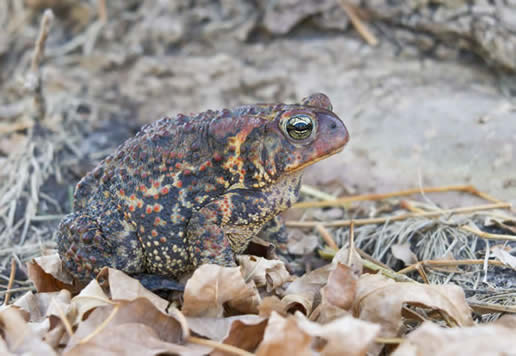
- Status: infrequently seen in Arb early April to mid-October, most often near wetlands and wooded areas
- Habitat: wetlands, woodlands, forested areas, suburban lawns near water
- Call is a high-pitched trill lasting around ten seconds
- Length up to 4 inches
- Diet: insects, worms, other small invertebrates
- Hibernates through winter in underground burrows
Western Chorus Frog (Pseudacris triseriata)
- Status: infrequently seen but easily heard near Arb ponds late March to early November, most often heard in spring
- Habitat: wetlands, cattail marshes
- Call is a loud, rising clicking sound, reminiscent of running a thumb across the teeth of a comb
- Length up to 1 inch
- Diet: flies, mosquitoes, other small invertebrates
- Often called “cricket frogs”
Gray Treefrog (Hyla versicolor)

- Status: commonly found in Arb early May to early October, often sitting on plant leaves or tree limbs
- Habitat: variety of habitats, often near gardens or wetlands, suburban areas near trees
- Call is a high trill lasting a couple seconds, often sounding like a soft police whistle
- Length up to 2 inches
- Diet: insects, other small invertebrates
- Ability to camouflage skin with its surroundings; found in shades of green, brown, and gray
Wood Frog (Rana sylvatica)
- Status: infrequently heard (and rarely seen) in Arb near Jones Northern Forest Ponds early April to early October, most often heard in April
- Habitat: wooded wetlands
- Call is a “quacking” similar to that of a duck but softer more subtle
- Length up to 3 inches
- Diet: insects, other invertebrates
- One of the first frogs to call in spring along with Western Chorus Frog
Northern Leopard Frog (Rana pipiens)

- Status: commonly seen and heard near Arb ponds late April to late October
- Habitat: ponds, wetlands, suburban lawns near water
- Call is a low croaking sound followed by quick, soft notes
- Length up to 5 inches
- Diet: insects, other invertebrates, small frogs
- State Amphibian of Minnesota
*All photos taken at Gustavus by Bob Dunlap, Arboretum Naturalist unless otherwise noted.